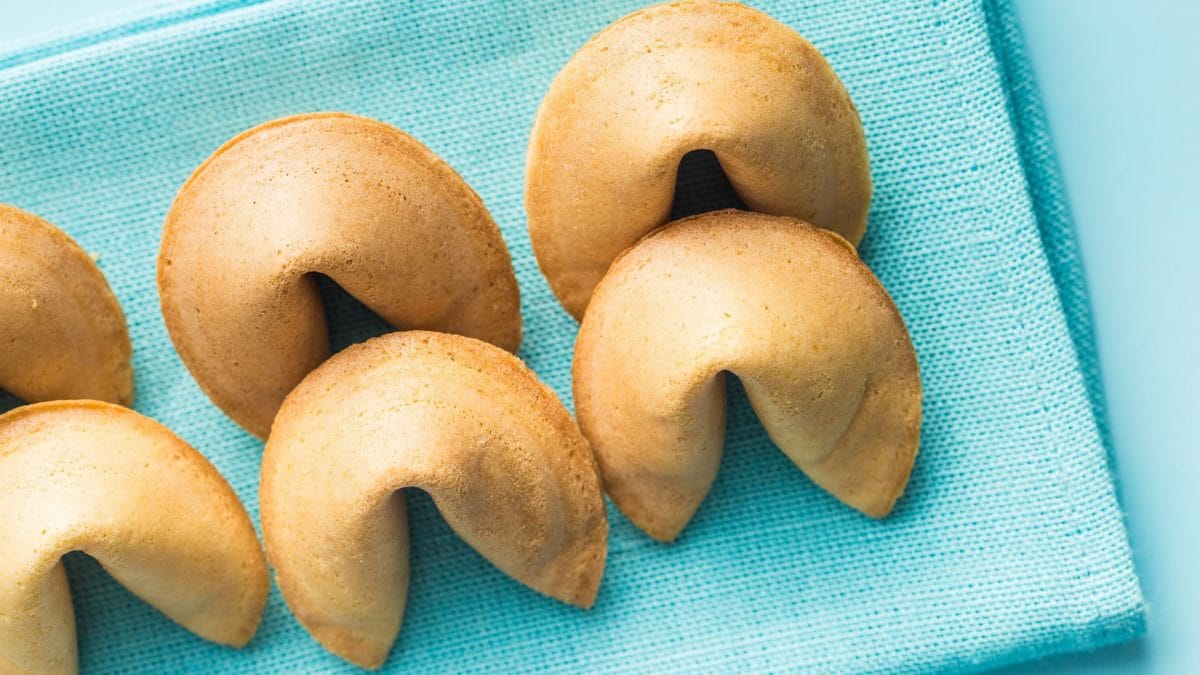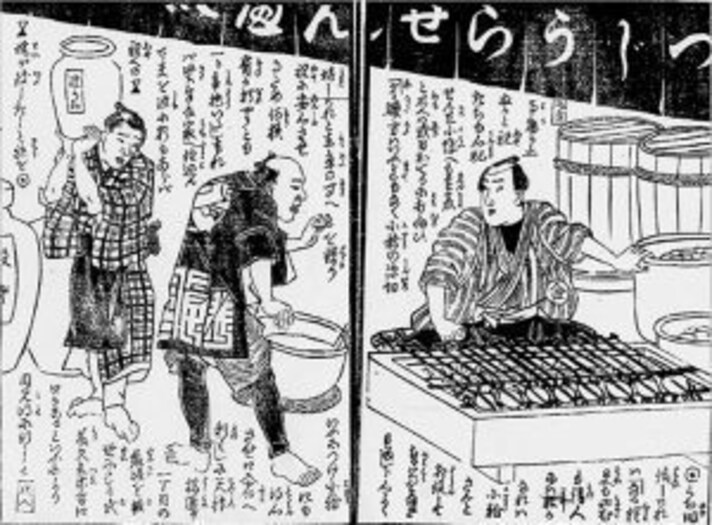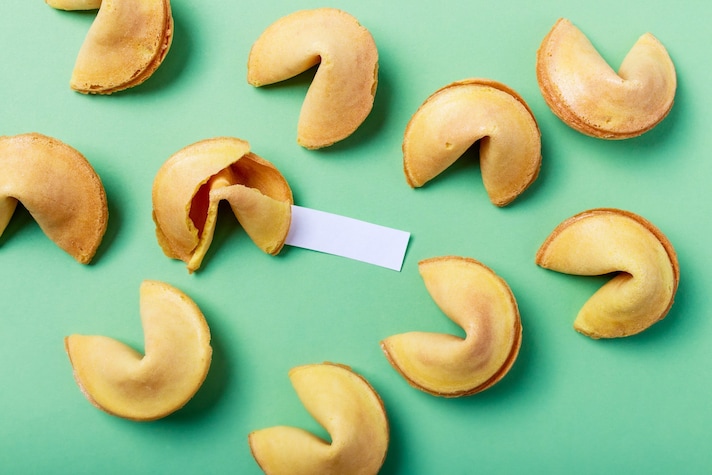
Fortune cookies are an (almost) unique case: all of the West associates them with Chinese restaurants, but in China they have never seen them. They are the oriental equivalent of Fettuccine Alfredo , the typical dish that Italian-American culture associates with Italy, but which is absolutely (or almost) unknown there.
Fortune cookies are not Chinese, they are American and have a Japanese origin. This dessert, composed of a sweet and crunchy biscuit, prepared with flour, sugar, vanilla and oil, is today one of the symbols of Chinese cuisine in the world, but in reality it has Japanese origins. Inside the biscuits are hidden some notes, also called "fortunes" that report proverbs, aphorisms or even numbers that people can use to "challenge" luck.
The True Story of Fortune Cookies
We owe the reconstruction of the history of fortune cookies to a girl who dedicated six years of her life to these sweets, on which she wanted to focus her thesis. Yasuko Nakamachi is a Japanese researcher, currently a professor of "Folklore and Cultural History" at the University of Kanagawa who, in 2008, graduated with a thesis on this particular food.
The author was unfamiliar with cookies and discovered this preparation for the first time in New York, and then found them on a trip to Kyoto in a different guise: larger and darker cookies than the American ones, containing "fortunes", and called tsujira senbei. Nakamachi's research took her to the "Library of the National Diet of Japan" where she came across the "Moshiogusa Kinsei Kidan", an illustrated book from 1878 in which an apprentice baker is making "fortune crackers". These cookies appeared in Japan 30 years before Japanese immigrants in California published their first advertisement.

Unfortunately, the "official" history of this product is decidedly obscure until the Second World War: in San Francisco there are dozens of families of Japanese origin who claim the introduction and spread of fortune cookies in America. Among them are also influential figures, such as the descendants of Makoto Hagiwara, the immigrant who supervised the construction of the Japanese Tea Garden inside Golden Gate Park, the oldest public park with a Japanese theme in the United States.
One of the "traditions" introduced by Hagiwara in 1890 was to serve fortune cookies to all visitors to the garden. Those sweets come from Benkyodo, one of the oldest Japanese bakeries in the city, a bakery that still exists and is run by the same family that founded it, now in its fourth generation.
The watershed of World War II is no coincidence: the Benkyodo family, like many others, was interned during the conflict and the company was forced to close. This particular bakery reopened only in 1951, but the same could be said of many lesser-known companies: in the 1950s, also due to the imminent conflict with Korea, racial hatred towards Asians in America was second only to that towards African Americans. It was a very dark period in our history, a period in which Japan was seen as a great enemy and China as an anomalous companion. Mao's nation, in fact, was part of the Allied forces after the attack on Pearl Harbor, helping the Marines to squeeze Japan in a vice on two fronts.

Japanese restaurants have become chop suey joints, one of the best examples of the syncretism of Chinese-American cuisine. It is a soup of meat and eggs, cooked quickly with bean sprouts, cabbage and celery; a very thick soup full of starch, or other thickeners. At the end of this meal comes the fortune cookie.
This new practice leads to the explosion of the "fortune cookie" mania: at the end of the 1950s, 250 million fortune cookies are produced each year, all sold almost exclusively in Chinese restaurants on the West Coast. In this period the product becomes truly "Chinese" because immigrants exploit the segregation of the Japanese and take over American production, which becomes their prerogative. Soon the cookies move from San Francisco and Los Angeles, to New York and Brooklyn, crossing the entire United States, from coast to coast, making this product a must on the menus of Chinese restaurants in the stars and stripes first, and then all over the world – except China.
The fortune cookie is a clear example of the intertwining of the history of humanity and that of gastronomy: a series of atrocious and hopefully unrepeatable episodes, such as the diaspora of a people or a world war, which however led a traditional preparation to transform itself to "conform" to the times, thus becoming famous in every corner of the globe.
;Resize,width=767;)
